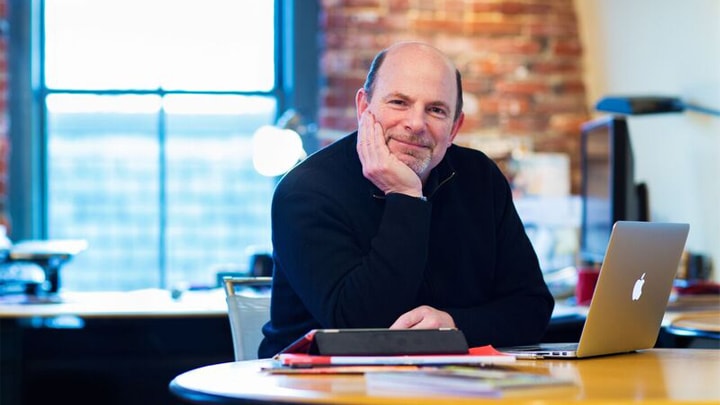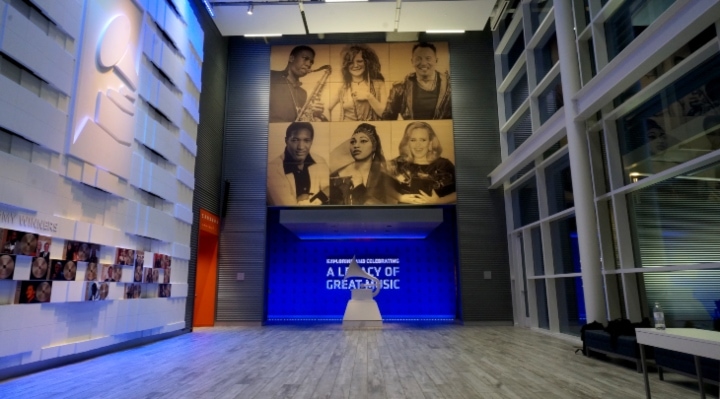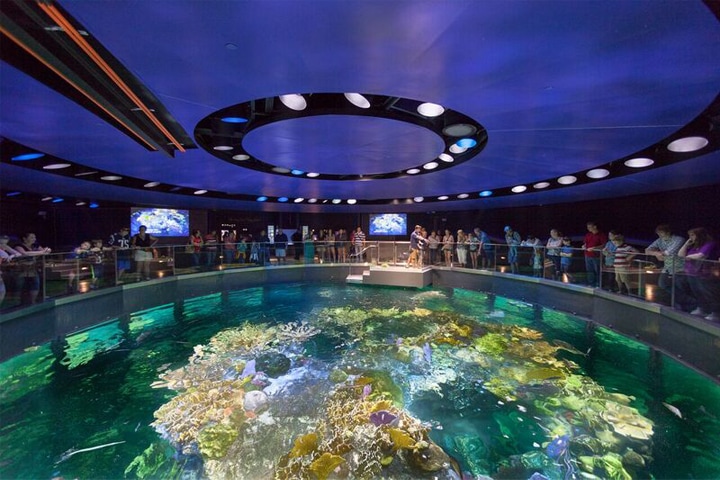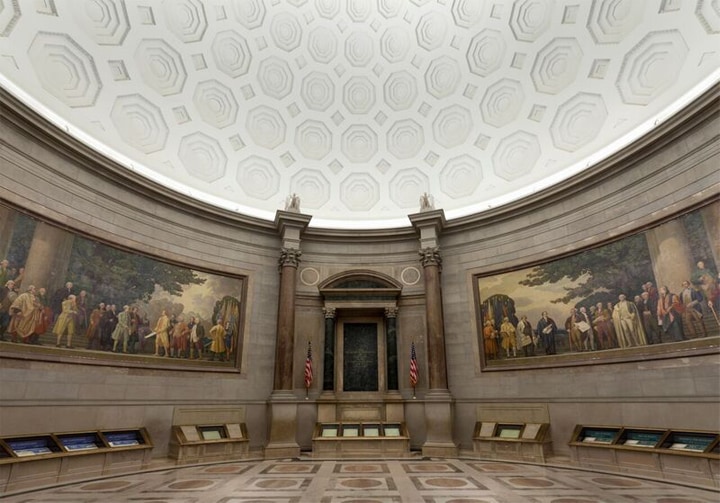
How do you maintain a fresh, new outlook on creativity?
There are so many ways to fuel creativity, both from an artistic response and via a constant eye on emerging/enabling technologies. When approaching a new project, we make an effort to avoid the same old ruts that can be easy to fall into; rather, we look to try something completely new or at least a novel twist on an old idea. Sometimes, a shred of a small concept turns into something of a hook for a whole project—that’s exciting! Nature is a huge source of inspiration. When I share a lighting inspiration with others, it’s almost always a picture or representation of natural light. We’re also inspired by understanding how others are using and thinking about light; not just other lighting designers but manufacturers, too. The process that product designers use in developing lighting products is a very different approach than how we think about applying light, but the end game is the same—to create compelling, creative and inspiring environments. Our team is constantly scouring different conferences from lighting to museums to architecture and more. We share interesting imagery or products with each other. In fact, we have a weekly virtual meeting across all our locations, as a forum for these discussions. It’s great to learn from and feed off of each other, and it shows in our work. There’s definitely an Available Light style and aesthetic, but that can easily be broken down into who was the main designer on a project as we each have our own distinct style.

How often does it happen that you have a lighting product tweaked or custom created?
It’s funny, it seems as if there’s an infinite number, variety and spectrum of products across the lighting universe, yet, I don’t know that we’ve ever done a project of substantial size where we didn’t ask a manufacturer for a “special.” For instance, we restored and renovated the lighting system for the Giant Ocean Tank at the New England Aquarium in Boston, Massachusetts. This is a massive 40-foot wide, 4-story high, 200,000-gallon salt-water tank filled with a beautiful array of marine and plant life. A corkscrew ramp hugs the circular tank so that visitors enjoy an up-close look from top to bottom. We got rid of all the incandescent and metal halide fixtures and replaced them with LED fixtures to light the tank and the adjoining penguin exhibit. We have a theatrical spirit here at Available Light, so one of the cool things that we added was a subtle color-changing component. Red light is immediately absorbed by water, so rather than using RGB color-changing fixtures, we had white-blue-green fixtures developed. The lights are always changing over time; it’s a very fluid lighting system. The visitor experience feels like a natural day; clouds pass by and the light changes subtly over time. The WGB fixtures weren’t custom made, they were a modification of an existing fixture. We do that all the time in collaboration with manufacturers; when almost everything looks right, but if we could just manipulate the dimming curve or change one color output, or modify a louver to control the light a certain way, the luminaire would be perfect for a particular application. With the advent of LEDs and the way they’re packaged and controlled, the possibilities of changing a fixture has grown exponentially. Another example from a purely technical point of view is that we can have the manufacturer tweak a fixture to reduce the amount of electricity that it consumes to meet an energy code. I wouldn’t say we do a lot of completely custom fixtures though. When you walk into a corporate interior or hotel lobby and see beautiful fixtures, more often than not, that lighting fixture choice comes from an interior designer or architect. Most work that we do supports the decorative light to create the ambiance or immersive experience that makes a space special to be in. So, more often than not, the focus is not on the light fixtures, it’s on the elusive quality of the space. The beautiful chandelier from the interior designer may not be fully lighting the space, but visitors think it is. The work we do in and around it supports the chandelier and makes it feel like an amazing piece.

Does a needs-based narrative work when talking to clients about how lighting integrates with the Internet of Things?
This is something that, as lighting designers, we are just beginning to grasp; we’re just scratching the surface now. Everything from asset tracking, location beacons and all these “smart” systems are coming online and hooking up to lighting systems because lighting has the best view of the room. It makes sense. But whereas we use a needs-based narrative with controls, when it comes to projects with IoT connectivity, it’s a different scenario. In that case, right now the client is driving the conversation, wanting a system to do X, Y and Z. They often understand the benefits of this new world of sensing and data collection better than we do because it involves aspects of their business that we don’t normally have visibility to. The same goes for Li-Fi; it’s a similar conversation to that of IoT integration. It’s very exciting. A Li-Fi signal is different than a wireless signal. Massive amounts of data move differently over high frequency blinking lights compared to copper wire. Maybe five years from now, it’ll be different, but at this point, the concept is driven more from the client than from the lighting designer. So, we learn what they need, and then communicate with manufacturers to determine how to integrate that into the lighting system. We still need to control the conversation, because IT shouldn’t take on the role of lighting designer. In the end, it’s most important, at least to us, that the lighting is the right lighting for that space. Whatever attributes we hang in the closet with it, like data collection, needs to be a secondary thought that doesn’t affect the quality of light in the space.
Describe a unique, challenging or otherwise memorable lighting design project.
The National Archives in Washington, D.C., feeds nicely into our previous conversation about working with manufacturers, taking an existing product and making it work for a specific task. We were commissioned to relight the Rotunda, which is the space that houses the Charter Documents, consisting of the Declaration of Independence, Constitution of the United States, and the Bill of Rights. The old lighting system was mind-blowing; it consisted of small spotlights driven by fiber-optic illuminators. Over time, the fibers deteriorated. There wasn’t enough light output, and it was yellowing. The lighting on the dome was splotchy and just not clean. It didn’t have the grandeur and scale that it deserved. We wanted to create a dramatic, take-your-breath-away space, but we had to control and limit the amount of light striking the precious documents. So, that’s an interesting technical challenge. The bigger challenge was that the Rotunda dome is only half of a dome with giant recessed coffers, so all the typical rules for lighting a dome were thrown out. We had to create a new way for it to look evenly lit, even though we couldn’t light all the way around. Our idea was a much more controlled lighting solution. Rather than a burst of light equal from all directions, we used small linear LED fixtures stacked like tiered wedding cakes on a trunnion or a mounting plate. They were pointed across the dome, and focused in a fan for near-, middle- and far-distant light. This very specific focusable light in different sectors on the face of the dome looked like an even wash of light, but it was achieved with hundreds of individual style lights focused in an array. Another cool, fun aspect of the project was when I worked with the staff on color temperature selection. I had LED strips with different colors temperatures and different CRIs. I plugged in the 2700K and they thought it was okay, but not quite right, and got the same reaction with the 3000K. I inadvertently plugged in both the 2700K and the 3000K at the same time; it was halfway between standard temperatures, but it appealed to everyone. Back then, the best way to achieve that was at the LED chip level, so we asked the manufacturer to produce 2850K LED fixtures. The LED revolution allowed us to do things that were never possible before. It’s so flexible; wherever you let your mind go creatively, you can come up with the solution using LEDs.

Running a business has nothing to do with lighting design. What can you offer to the next lighting design generation who doesn’t know what’s involved in owning a business?
It’s eye-opening, I’ll tell you that. For my path, the answer was to have a good partner. When I was with Rick Chamberlain, back in the Norfolk Group days, he had a real penchant for business, and I was pretty good at design. So, we each had our own groove, and complemented each other. When Rick moved on, I struggled to manage my workflow, clients and other aspects of the business. My wife quit her job and joined me to run my company; for years, she was our Managing Director. Eventually Rick Chamberlain returned to Available Light as the Managing Director, and my wife became CFO. We operate like a theater company, and it has served us very well. In any regional theater company around the United States, you almost always see two people on the letterhead: one responsible for the artistic choices and one responsible for the business. It’s hard to trust yourself enough to split responsibilities that way because a managing director position often isn’t perceived as a revenue-generating position. But, in fact, it actually is because it allows the creative people to focus on the work product we sell.
How do you sort through a huge universe of lighting technologies to maximize the aesthetic benefits of lighting?
This is really about innovation in lighting, and how much it has exploded. In the first 20 years of my career, as long as I went to conferences and read magazines, I could keep up with the lighting innovation curve; it was incremental. Along came LED technologies, and now, it feels like, every day, we’re drinking from a firehose. Things change so quickly, and when data that we use to justify an idea changes, we often have to rethink our approach. This is where our team approach works very well, because the lighting designers here pick up on important developments and disseminate this information the team. We also depend a lot on our sales reps and manufacturers to help us understand new innovations in light sources, luminaires and controls. We have to think how these products best serve our clients, not only on opening day but decades from now. A big percentage of my time is spent learning and researching, but it’s part of our value, and good for business. The more complicated lighting becomes, the more projects require a lighting designer. It builds clients and a healthy respect for what we do among architects and interior designers.
How do you keep pace with changes beyond lighting technologies and controls, like deciding what software tools to use?
In the United States, most professional lighting people use AGi32 for lighting calculations and rudimentary lighting renderings, while European designers prefer using DIALux. Our IALD colleagues overseas are so adamantly in favor of using it that we’ve started to research this a bit more, including running parallel calculations between the two programs. We’re in the genesis of this testing, so haven’t come to any conclusions yet, and of course, we have to figure out how everyone, including other designers and architects, can play in the same sandbox, so to speak. Nothing is ever set in stone in this industry. The same is true in rendering and drawing programs. For years, the architecture world revolved around AutoCAD. Then along came an upstart called Revit with building information modeling (BIM) software. It’s amazing how quickly that was adopted.
Steven Rosen’s photo in the title banner (c) Lisa Abitol.

November 14, 2023
How lighting technology can help reduce risks to migrating birds